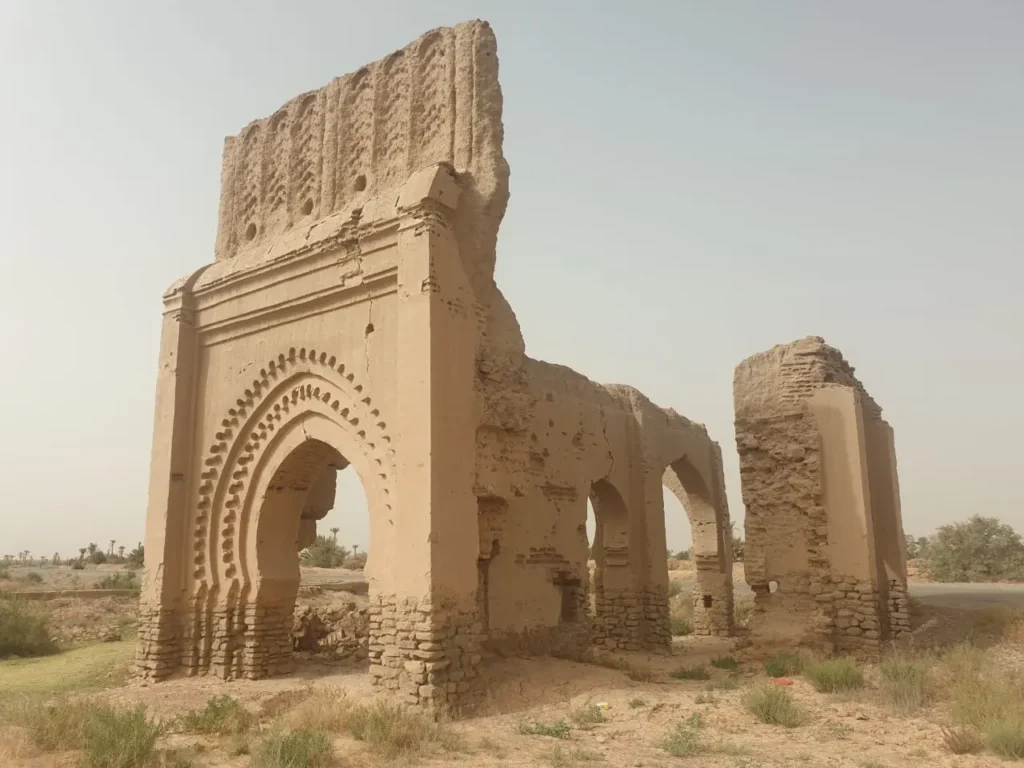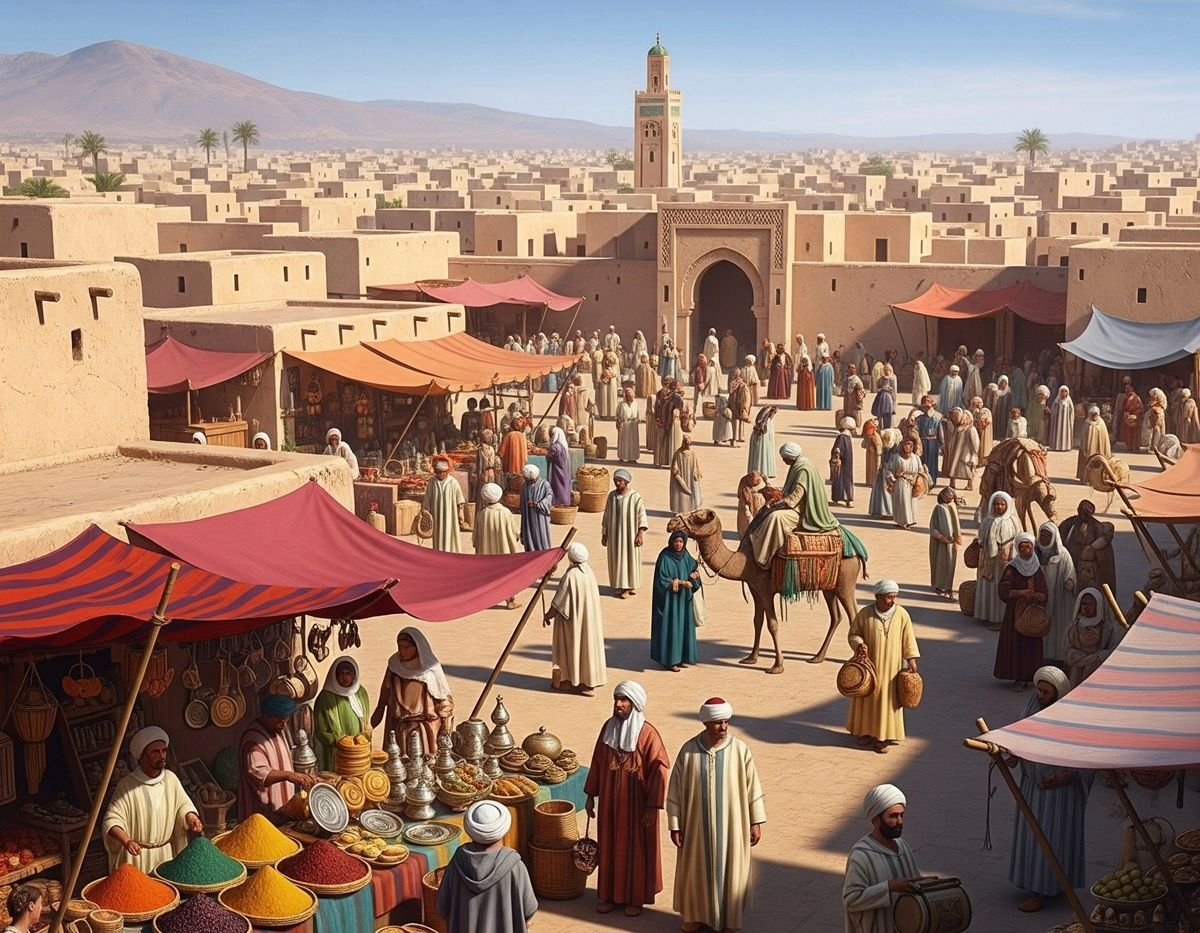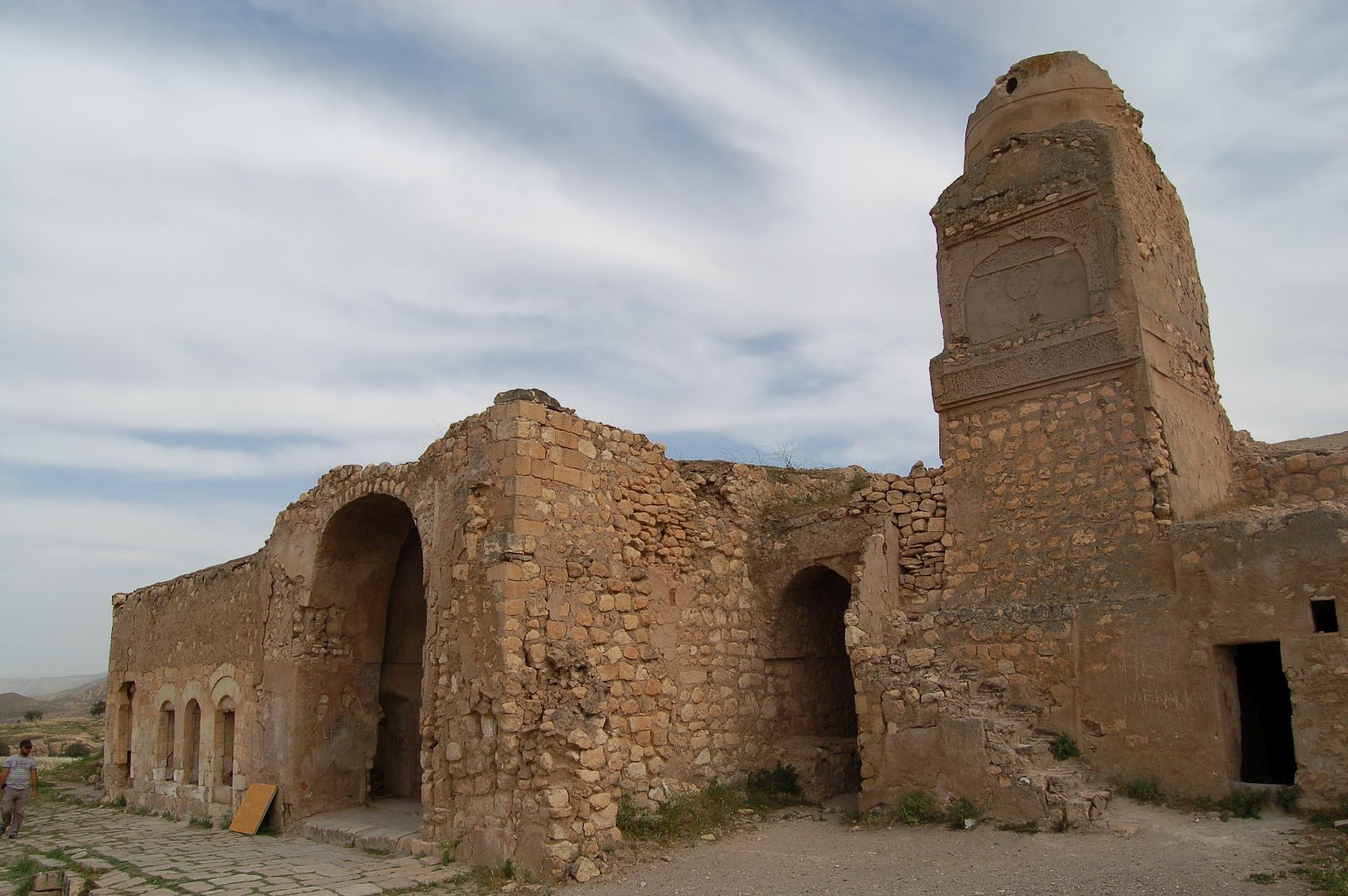Sijilmassa: A historical legend that narrates chapters of Moroccan civilization

Many cities have enriched Morocco's historical memory throughout its long history. Some still stand, testament to the grandeur of this history, while the ravages of time have obliterated—or nearly obliterated—the physical presence of others that were once a sight to behold. One of these cities, which served as a link between Morocco and its African heartland, is Sijilmassa, a city that flourished for centuries before its physical presence vanished, leaving behind only ruins of walls and gates. This ancient city is located in eastern Morocco, in the Tafilalt province. The town of Rissani, distinguished by its kasbahs and rich monuments, is now built on top of the site. Sijilmassa is approximately 90 kilometers south of Errachidia (the provincial capital), and only 50 kilometers from the Algerian border. Let us shed some light on this ancient city.
History of the construction of the city of Sijilmassa
The city of Sijilmasa was founded in the eighth century AD, specifically in 757 AD, by the Islamic preacher Abu al-Qasim, known as al-Da'i, who played an active role in spreading Islam throughout the country. The idea for building this city arose from the region's commercial and cultural needs, as Sijilmasa sought to be a meeting point for various trade caravans coming from the East and the West.
During this period, social and political conditions reflected a state of major transformation in Morocco. The country underwent periods of political conflict, leading many tribes and trading centers to seek strategic locations to enhance their economic and political influence. Sijilmassa served as a pivotal hub for overland trade, and thanks to its geographical location, goods and commodities, including gold, clothing, and sugar, could be exchanged between different regions.
In addition, the city was known for its cultural attractions, which attracted many jurists and scholars, thanks to its openness to different cultures. Over the years, Sijilmassa became a symbol of modernity and creativity in urban construction, distinguished by its unique architecture and urban system, which other Moroccan cities later drew upon. These factors contributed to strengthening its position as an important center in Moroccan history, enabling its activities to continue and compete with other major cities that flourished in later eras.
Bright and dark historical stages
Sijilmassa is considered one of Morocco's most prominent historical sites, having undergone several phases of prosperity and decline. Founded in the eighth century AD, it was an important trading center linking Morocco and the Sahara Desert, thus significantly influencing trade and transportation routes. During this period, the city experienced an economic and cultural renaissance, as trade caravans arrived laden with valuable goods, contributing to the construction of a robust commercial network that made Sijilmassa a magnet for scholars and merchants. The city was also home to numerous public buildings and cultural facilities, reflecting its overall prosperity.

During the Middle Ages, it was Sijilmassa A prosperous commercial city, it began to lose its importance after the fall of the Marinid dynasty and the shift of trade routes towards the Atlantic Ocean. With the rise of the Alaouite dynasty, the city took on a new status.
Sijilmassa at the beginning of the Alawite era
The Alaouite state was launched from the Tafilalt region, where Sijilmassa is located, by Mawla Muhammad ibn al-Sharif Who is considered its actual founder. The city witnessed some stability during the reign of Mawla Rashid (1664-1672 AD), who was born there and educated by his father and some of its jurists.
Reconstruction and Final Deterioration
Some sources mention that the city was rebuilt in 18th century By order of the Sultan Mawla IsmailDespite this attempt, the city was destroyed and ruined by Bedouin tribes in the year 1818 AD, turning it into ruins.

Reasons behind its deterioration
There are many reasons that led to the deterioration of Sijilmassa, the most important of which are:
Trade routes shiftSijilmassa lost its importance as a major trading center after the major trade routes shifted from the Sahara to the Atlantic Ocean.
political unrestThe region suffered from political instability and inter-tribal conflicts, which negatively impacted the city's security and economy.
Natural conditionsHarsh climatic conditions, such as drought and epidemics, contributed to the city's accelerated decline.
Today, nothing remains of Sijilmassa except ruins and devastation that bear witness to its historical greatness. It has been registered as National heritage To highlight its archaeological and architectural value.
The role of Sijilmassa in spreading Islam
The city of Sijilmassa is considered one of the most prominent historical stations in the spread of Islam in West Africa. Founded in the eighth century AD, it played a pivotal role in the exchange of Islamic knowledge and culture, serving as a point of contact between different civilizations. Caravans of scholars and traders set out from Sijilmassa, contributing to the transmission of Islamic teachings to neighboring regions, particularly the cities of Timbuktu and Chinguetti.
Through these relations, Sijilmasa was not just a trading point, but also a hub for the dissemination of Islamic sciences and culture. The city witnessed a vibrant movement of scholars who established schools and libraries and offered lessons in jurisprudence and Islamic law, encouraging members of various tribes and peoples to embrace Islam. This educational movement had a significant impact on shaping the region's cultural and religious identity.
Moreover, Sijilmassa contributed to building strong commercial and religious ties with other regions, serving as a link between Morocco and the countries of West Africa. These relationships fostered understanding and cultural exchange, which helped spread Islam more widely. This was embodied in the trade journeys undertaken by Muslim merchants, who were accompanied on their journeys to distant regions by religious scholars who disseminated Islamic teachings and sciences.
The rich history of Sijilmassa reflects its significant influence in the spread of Islam. It stands as a living example of how trade and learning influenced the development of societies and the dissemination of Islamic values. Thus, despite the passage of time, Sijilmassa remains a vital symbol of Islamic civilization in Africa.
Present and Future: Sijilmassa Today
Sijilmassa, a historic city long celebrated for its rich culture and strategic location, has served as a starting point for numerous civilizations. Today, Sijilmassa faces several challenges, including urban decay and the loss of its cultural identity, requiring collective guidance and efforts to revive the city.
Local government authorities and civil society organizations are seeking to revitalize Sijilmassa as a distinct cultural tourism destination. These efforts include promoting the city's architectural and historical heritage by organizing festivals and exhibitions that highlight chapters of its rich history, helping attract visitors and investors. These initiatives also aim to stimulate local economic activity by promoting handicrafts and traditional crafts.
In addition, sustainable development projects are of paramount importance, focusing on preserving archaeological sites and improving the city's infrastructure. These projects include street renovations, the establishment of cultural centers, and the provision of green spaces, making Sijilmassa an attractive place to live and visit. The use of modern technologies such as digital tourism can enhance the city's engagement with its visitors, offering them a unique experience that ensures they engage with its rich civilization.
Ultimately, Sijilmassa holds tremendous potential for the future and is working to regain its status as one of Morocco's most prominent destinations. By focusing efforts on cultural tourism and sustainable development, Sijilmassa can take its natural place in the landscape of contemporary Moroccan civilization.





